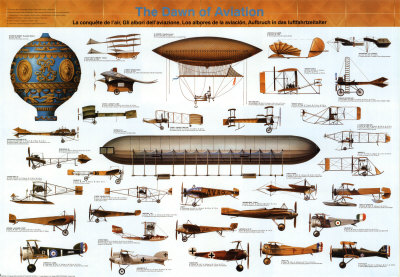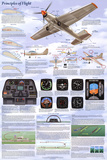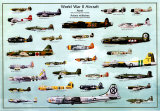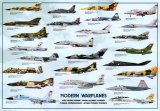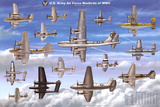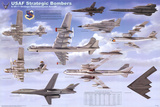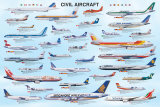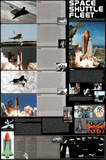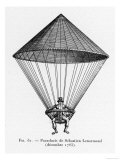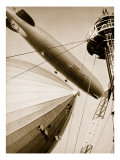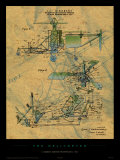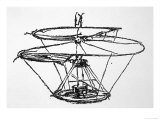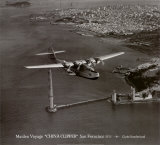|
|
Aviation Educational Posters- the Science, Art & History of Flight
for the classroom and home schoolers.
|
social studies > AVIATION & FLIGHT | List of Notable Aviators | a | b | c | d | e-f | g | h-k | l | m | n-q | r | s | t-z < science
|
|
Pioneers in aviation include the Montgolfier and Wright Brothers, hot air balloonists, gliders, parachutes, military and commericial aviation, space flight and the Greek myth of Icarus.
FYI ~ The word ‘aviation’ is French, from the Latin avis “bird”.
|
|
|
|
|
Humans have long sought to soar in the sky, just like birds. This informative and visually striking poster shows what it took to accomplish that seemingly impossible goal. The bottom row shows mans earliest attempts to fly. Moving up the poster, the most important discoveries, inventions and events are presented in chronological order. The great aviation pioneers are honored by a portrait and a brief biography. In the late 1700s, English engineer Sir George Cayley correctly identified the four forces that would affect a flying machine. A century later, Lawrence Hargrave discovered the lift provided by a cambered wing.
About that time, Octave Chanute compiled and published the first organized, written collection of aviation research. He shared his knowledge with many aviation pioneers. Americans Orville and Wilbur Wright made the first controlled flight of a heavier than air machine on December 17, 1903 at Kitty Hawk, North Carolina. It flew 120 feet in 12 seconds. Their Flyer was very experimental, and it took the Wright brothers three more years to make it reasonably practical. Some of the valuable improvements made by other early aviators are incorporated in the two planes shown above the Flyer.
|
|
|
|
Military & Civil Aircraft
Aircraft in the form of balloons and Zeppelin were used early in World War I for reconnaissance, and then as bombers, but their stationary positions made them targets and ineffectual. Then the new innovations of novelty sports type planes developed in the ten years since the Wright Brothers first powered flight were pressed into service. Serious aerial combat evolved when the pilots started shooting at one another with hand guns. • more WW II posters
|
|
|
|
|
|
|
In December 1783 Sebastien Lenomard jumped from a Montpelier observatory tower in Paris with a 14’ round piece of linen cloth shaped like an umbrella. He named the device a 'parachute', Fr. parare=to shield, chute=fall. (oh- I just got 'parasol' - shield from sun.)
Leonardo da Vinci made notations of a device that would break a fall c. 1495; and in 1617 Venetian Fauste Veranzio constructed an application based on da Vinci's drawing and jumped from a tower in Venice.
The Chinese also worked on the concept of letting a person fall safely from some height c. 1200, and in 852 AD a gentleman named Armen Firman sustained only minor injuries when he lept from a tower in Cordoba using his cloak stiffened with wooden struts.
Gurkhas Parachute story ~
During WWII the British Indian Army planned to drop a company of Gurkhas, tough fighters though inexperienced at flight, behind Japanese lines. A major explained the plan to the Gurkha sergeant major, who in turn explained the plan to his troops.
The sergeant major then went back to the major saying “Sah, the men say they want the plane to fly over marshy ground, as slowly as possible and no more than a hundred feet high” to which major replied "Sergeant major, we could go down to 400 feet to drop you but that wouldn't leave enough time for the parachutes to open", to which the Sergeant major replied, "Ooohhh, paraaaachutes???"
|
|
|
|
|
|
|
Helicopter
The helicopter, an aircraft lifted and propelled by horizontal rotors was not commercially available until 1942 when Igor Sikorsky's design went into full production.
The word helicopter is from the Greek helix=spiral and pteron=wing.
|
|
|
|
Pan American Airways used flying boats for trans-ocean air service. The first commercial Trans-Pacific flight took off from Alameda, California on November 22. 1935; transatlantic flights began in 1939. The use of the name “clipper” refers to 19th century sailing ships designed and noted for their speed.
|
|
|
|
|
|
previous page | top | AVIATION & FLIGHT | List of Notable Aviators
|
I have searched the web for visual, text, and manipulative curriculum support materials - teaching posters, art prints, maps, charts, calendars, books and educational toys featuring famous people, places and events - to help teachers optimize their valuable time and budget.
Browsing the subject areas at NetPosterWorks.com is a learning experience where educators can plan context rich environments while comparing prices, special discounts, framing options and shipping from educational resources.
Thank you for starting your search for inspirational, motivational, and educational posters and learning materials at NetPosterWorks.com. If you need help please contact us.
|
|
|














